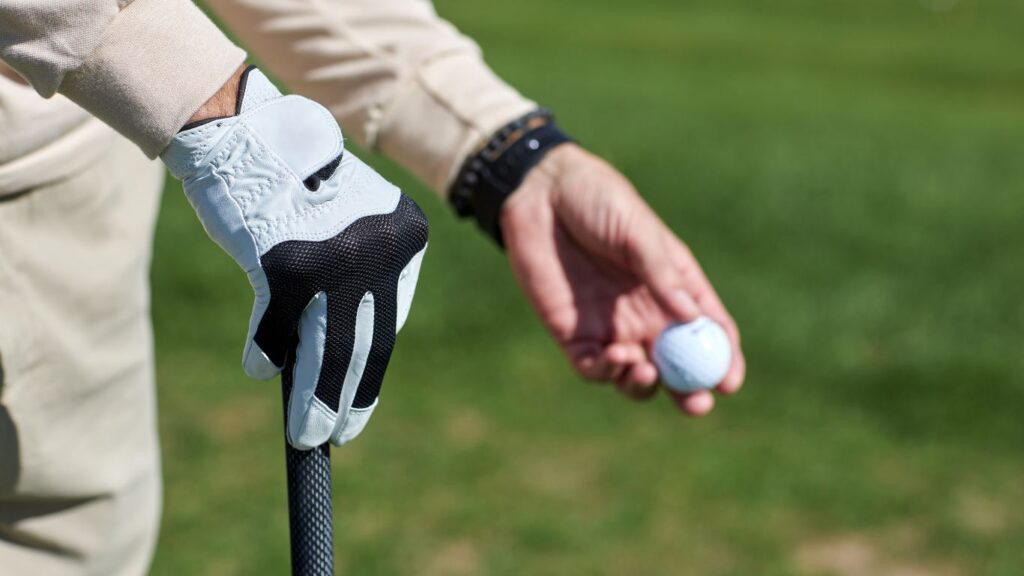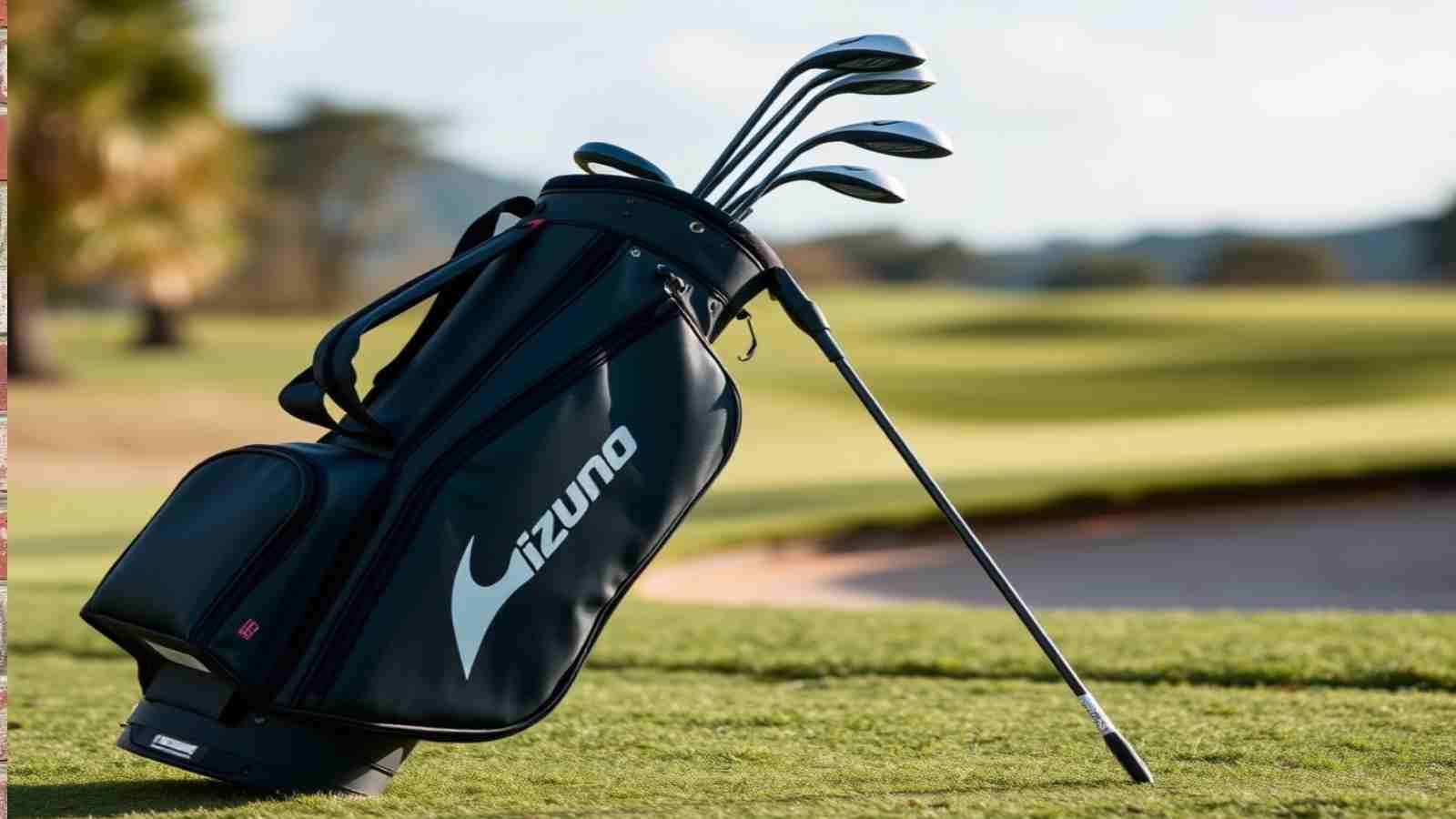If you’re new golf or seeking to refine your technique, understanding how grip a golf club properly is essential. A well-formed grip lays the foundation for a smooth, effective swing, leading to better control, accuracy, and consistency. This guide will walk you through the basics of gripping a golf club, common mistakes to avoid, and practical drills to perfect your grip.
Understanding the Basic Types of Grips
Before we get into the specifics, let’s explore the tree primary types of grips:
Overlapping Grip
Also known as the Vardon grip, this is the most common grip among golfers. In this grip, the little finger of the right hand (for right-handed golfers) overlaps between the index and middle fingers of the left hand.
Interlocking Grip
Popularized by legends like Tiger Wood, the interlocking grip involves interlocking the little finger of the right hand with the index finger of the left hand. This grip offers a more secure feel, which is particularly beneficial for smaller hands.
Baseball Grip
Also known as the ten-finger grip, this grip is often used by beginners and juniors. All ten fingers are placed on the club without overlapping or interlocking in this grip.
Proper Hand Placement

Left-Hand Placement
For right-handed golfers, position the club diagonally across the fingers of your left hand. The base of your pinky should be near the end of the grip, and your thumb should rest slightly to the right of the club’s centre.
Right-Hand Placement
Align the club diagonally across the fingers of your right hand so that your right hand’s lifeline covers the thumb of your left hand. This ensures a cohesive and synchronised grip.
Correct Thumb Position
The left thumb should rest just right of center on the grip, creating a “V” shape between the thumb and forefinger. This “V” should point towards your right shoulder.
Maintaining Light Grip Pressure
A common beginner mistake is gripping the Club too tightly. Instead, aim for light grip pressure that allows for a natural, fluid swing. The grip should only become slightly firmer during impact to maintain control.
Consistent Grip Pressure Throughout the Swing
Ensure that your grip pressure remains consistent throughout the swing. Avoid tensing up, which can lead to restrictive movements and poor shots.
Common Mistakes to Avoid
- Gripping Too Tightly: This can cause tension in the arms and shoulders, inhibiting a smooth swing.
- Incorrect Hand Placement: Placing your hands too far to the left or right on the Club can lead to inconsistent ball contact.
- Holding the Club in the Palm: Ensure the Club rests across your fingers rather than in the palm to improve control and accuracy.
- Overlapping Too Much: Excessive overlapping can create unnecessary tension in your hands and forearms.
- Not Adjusting Grip for Different Clubs: Each Club requires a slightly different grip, so be mindful of the adjustments needed.
Practice Drills to Perfect Your Golf Grip
Grip Pressure Practice
Hold the Club with a light grip, gradually squeeze it to medium pressure, and loosen it back to light. Repeat this 10-15 times to develop a feel for the ideal grip pressure during your swing.
Alignment Drill
Use a mirror to check the alignment of your hands on the Club. Practice aligning the “Vs” formed between your thumb and forefinger on both hands so they point towards your right shoulder (for right-handed golfers).
Swing with a Glove
Place a glove under your left armpit (for right-handed golfers) and focus on keeping it there throughout your swing. This drill helps maintain connection and control, reinforcing the importance of a proper grip.
3-Step Grip Check
Before each swing, consciously run through the grip steps—hand placement, thumb position, right-hand alignment. This habit helps ingrain the correct grip into muscle memory.
Glove Under Right Arm
Place a glove under your right armpit and hit balls at the range. This drill encourages a more connected swing, as a disconnected swing can often signify a poor grip.
Club Twirl
After each swing, practice a slight club twirl in your fingers. This ensures you have maintained a light grip throughout the swing, as a tight grip makes it harder to twirl.
Grip Stance
Without a ball, take your stance and make a few practice swings, focusing entirely on the feeling of your grip. This helps isolate the grip’s sensation from the rest of the swing, reinforcing muscle memory of the correct grip.
Practice with Different Clubs
Regularly practice with different clubs to ensure your grip adapts to the Club’s length and weight, preventing consistency issues due to incorrect grip pressure.
Real-life Examples and Anecdotes
- Beginner Golfer:
- A beginner golfer struggled with inconsistent drives until a coach corrected his grip. This adjustment led to substantial improvements in his game, underscoring the importance of a proper grip.
- Junior Golfer:
- A junior golfer noticed a significant increase in accuracy and distance after adjusting her grip based on a tip from a professional player during a meet-and-greet event.
- Senior Golfer:
- A senior golfer with arthritis found renewed enjoyment in the game by learning a modified grip that reduced strain on his hands, illustrating the adaptability of grip techniques to individual needs.
- Slicing Issue Correction:
- A golfer who, after years of slicing the ball, finally corrected his grip following a friend’s advice, leading to straighter, more predictable shots.
FAQs
What grip style is best for beginners?
For beginners, the Baseball grip (ten-finger grip) is often the easiest to learn as it allows for greater comfort and control without worrying about interlocking or overlapping.
How can I tell if my grip pressure is correct?
Proper grip pressure should feel firm but relaxed. You should be able to hold the Club without strain while maintaining enough control to execute your swing. You may be gripping too tightly if you feel tension in your hands or forearms.
Can my grip affect my swing?
Yes, your grip has a significant impact on your swing. An improper grip can lead to various issues, such as slicing or hooking the ball, inconsistent contact, and a lack of control over your shots.
Should my grip change for different clubs?
Yes, the grip may need slight adjustments based on the Club you are using. Longer clubs like drivers require a little more grip pressure for control, while shorter clubs like wedges may benefit from a lighter grip.
How often should I practice my grip?
It’s beneficial to incorporate grip practice into your regular training sessions. Check and refine your grip regularly to reinforce muscle memory and ensure consistency in your performance.
Conclusion
Mastering the golf grip is a fundamental step toward improving your game. Understanding and practicing the correct grip can lead to better control, accuracy, and enjoyment, whether you’re a beginner, junior, or senior golfer. Remember, a good grip is the foundation of a good swing. Regularly check and adjust your grip, and practice the drills mentioned to ingrain the correct technique.










